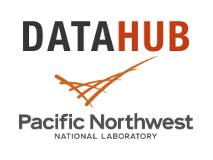Journal Article
Geoscientific Model Development, vol. 12, iss. 4, pp. 1443-1475, 2019
Authors
Matthew J. Gidden, Keywan Riahi, Steven J. Smith, Shinichiro Fujimori, Gunnar Luderer, Elmar Kriegler, Detlef P. van Vuuren, Maarten van den Berg, Leyang Feng, DAVID KLEIN, Katherine Calvin, Jonathan C. Doelman, Stefan Frank, Oliver Fricko, Mathijs Harmsen, Tomoko Hasegawa, Petr Havlik, Jérôme Hilaire, Rachel Hoesly, Jill Horing, Alexander Popp, Elke Stehfest, Kiyoshi Takahashi
Abstract
Abstract. We present a suite of nine scenarios of future emissions trajectories of
anthropogenic sources, a key deliverable of the ScenarioMIP experiment within
CMIP6. Integrated assessment model results for 14 different emissions species
and 13 emissions sectors are provided for each scenario with consistent
transitions from the historical data used in CMIP6 to future trajectories using
automated harmonization before being downscaled to provide higher emissions
source spatial detail. We find that the scenarios span a wide range of
end-of-century radiative forcing values, thus making this set of scenarios ideal
for exploring a variety of warming pathways. The set of scenarios is bounded on
the low end by a 1.9 W m−2 scenario, ideal for analyzing a world with
end-of-century temperatures well below 2 ∘C, and on the high end by a 8.5 W m−2
scenario, resulting in an increase in warming of nearly 5 ∘C over pre-industrial
levels. Between these two extremes, scenarios are provided such that differences
between forcing outcomes provide statistically significant regional temperature
outcomes to maximize their usefulness for downstream experiments within CMIP6.
A wide range of scenario data products are provided for the CMIP6 scientific
community including global, regional, and gridded emissions datasets.
